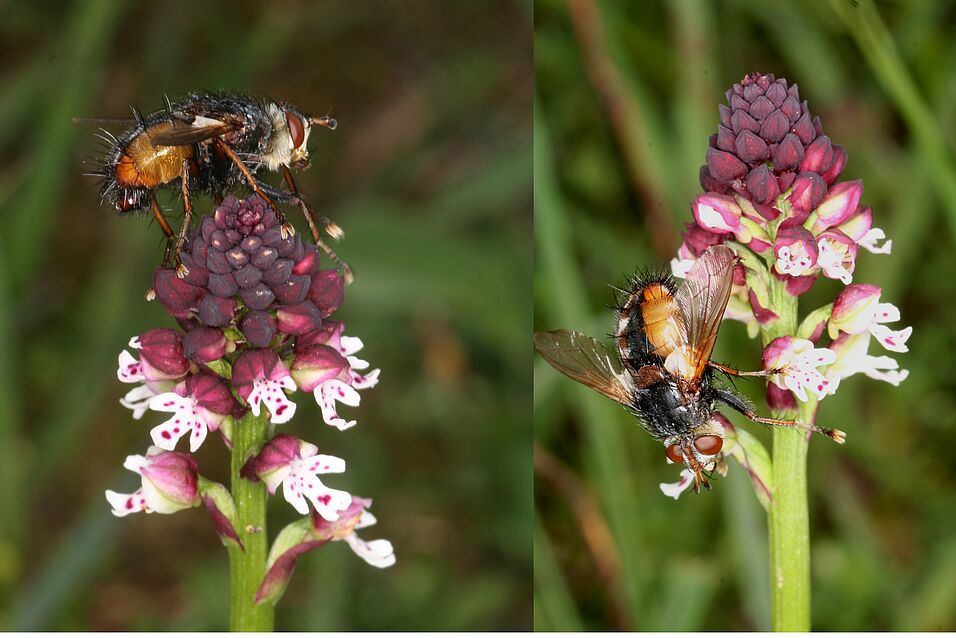Martel C, Rakosy D, Dötterl S, Johnson SD, Ayasse M, Paulus HF, Nilsson LA, Mejlon H & Jersáková J. 2021
Front. Ecol. Evol. 9: 1-17, 659176. doi: 10.3389/fevo.2021.659176. Published online 16 June 2021
Abstract
Despite increased focus on elucidating the various reproductive strategies employed by orchids, we still have only a rather limited understanding of deceptive pollination systems that are not bee- or wasp-mediated. In Europe, the orchid Neotinea ustulata has been known to consist of two phenologically divergent varieties, neither of which provide rewards to its pollinators. However, detailed studies of their reproductive biology have been lacking. Our study aimed to characterize and understand the floral traits (i.e., morphology, color, and scent chemistry) and reproductive biology of N. ustulata. We found that the two varieties differ in all their floral traits; furthermore, while Neotinea ustulata var. ustulata appears to be pollinated by both bees (e.g., Anthophora, Bombus) and flies (e.g., Dilophus, Tachina), var. aestivalis is pollinated almost entirely by flies (i.e., Nowickia, Tachina). Tachinids were also found to be much more effective than bees in removing pollinaria, and we show experimentally that they use the characteristic dark inflorescence top as a cue for approaching inflorescences. Our results thus suggest that while both N. ustulata varieties rely on tachinids for pollination, they differ in their degree of specialization. Further studies are, however, needed to fully understand the reproductive strategy of N. ustulata varieties.

